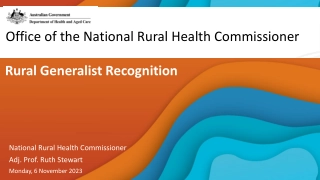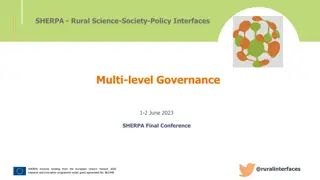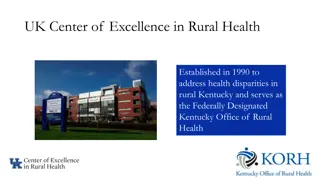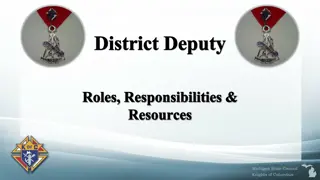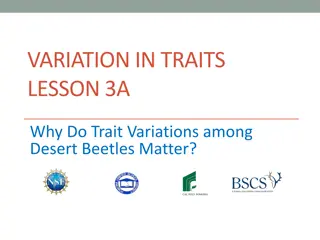Exploring Variations in Rural District Development Factors
The causes of differing district development in rural Papua New Guinea (PNG) are investigated, highlighting various factors influencing development outcomes such as natural endowments, colonial history, social institutions, and ethno-linguistic fragmentation. Preliminary findings suggest that social factors like language diversity and Austronesian heritage significantly impact district development, while access remains a crucial determinant. Improved data collection is needed for more conclusive results.
Download Presentation

Please find below an Image/Link to download the presentation.
The content on the website is provided AS IS for your information and personal use only. It may not be sold, licensed, or shared on other websites without obtaining consent from the author.If you encounter any issues during the download, it is possible that the publisher has removed the file from their server.
You are allowed to download the files provided on this website for personal or commercial use, subject to the condition that they are used lawfully. All files are the property of their respective owners.
The content on the website is provided AS IS for your information and personal use only. It may not be sold, licensed, or shared on other websites without obtaining consent from the author.
E N D
Presentation Transcript
The Causes of Differing District Development in Rural PNG Colin Filer, Jon Fraenkel, Terence Wood terence.wood@anu.edu.au
Some parts of rural PNG are more developed than others Menya, 226 Kundiawa, 26 Under 5 mortality (per 1000), 1995-99
Sometimes even remarkable variation within provinces Madang Districts 152 124 118 96 71 54 Mid-Ramu Rai Bundi Bogia Sumkar Madang Under 5 mortality (per 1000), 1995-99
What explains the variation? It s an interesting practical question: If we can learn the secret of successful district s success, perhaps we can adopt in other places? It s an interesting theoretical question (what causes development?): Natural endowments (logs, mines)? Environment more broadly? Colonial history? Pre-colonial/social institutions (cooperation)? Ethno-linguistic fragmentation (cooperation)? But it s hard to research: need data!
Method OLS regressions on rural districts, province fixed effects as robustness tests Preliminary findings Enrolment -0.54** 9.60** -0.10 -4.05 1.25 1.10 8.41 -15.38** -1.91 35.69 -0.00 82 0.44 Mortality 1.53* -14.99 -0.10 7.84 -2.35 -4.45 -3.53 53.35* 3.78 -69.39 -0.00 83 0.37 Poverty 0.01*** -0.08* -0.00 -0.01 -0.07* 0.06* 0.08 0.18*** -0.05 -0.09 -0.00 83 0.48 Number of languages Is Austronesian Years colonised Government or church mission Logging? Mining? Coastal? % bad road access % on poor quality land % in town Population 2000 Observations R2 Resource endowments & colonial history don t matter much Access matters; poor land doesn t
Rural districts with more languages have (a lot) lower development outcomes
(Not as robust) but Austronesian areas appear to have higher development outcomes
Tentative findings Social factors/cooperation (languages, Austronesian) have a big impact on district development Access matters too. History, land quality, logs and mines don t matter as much. But we need better data


